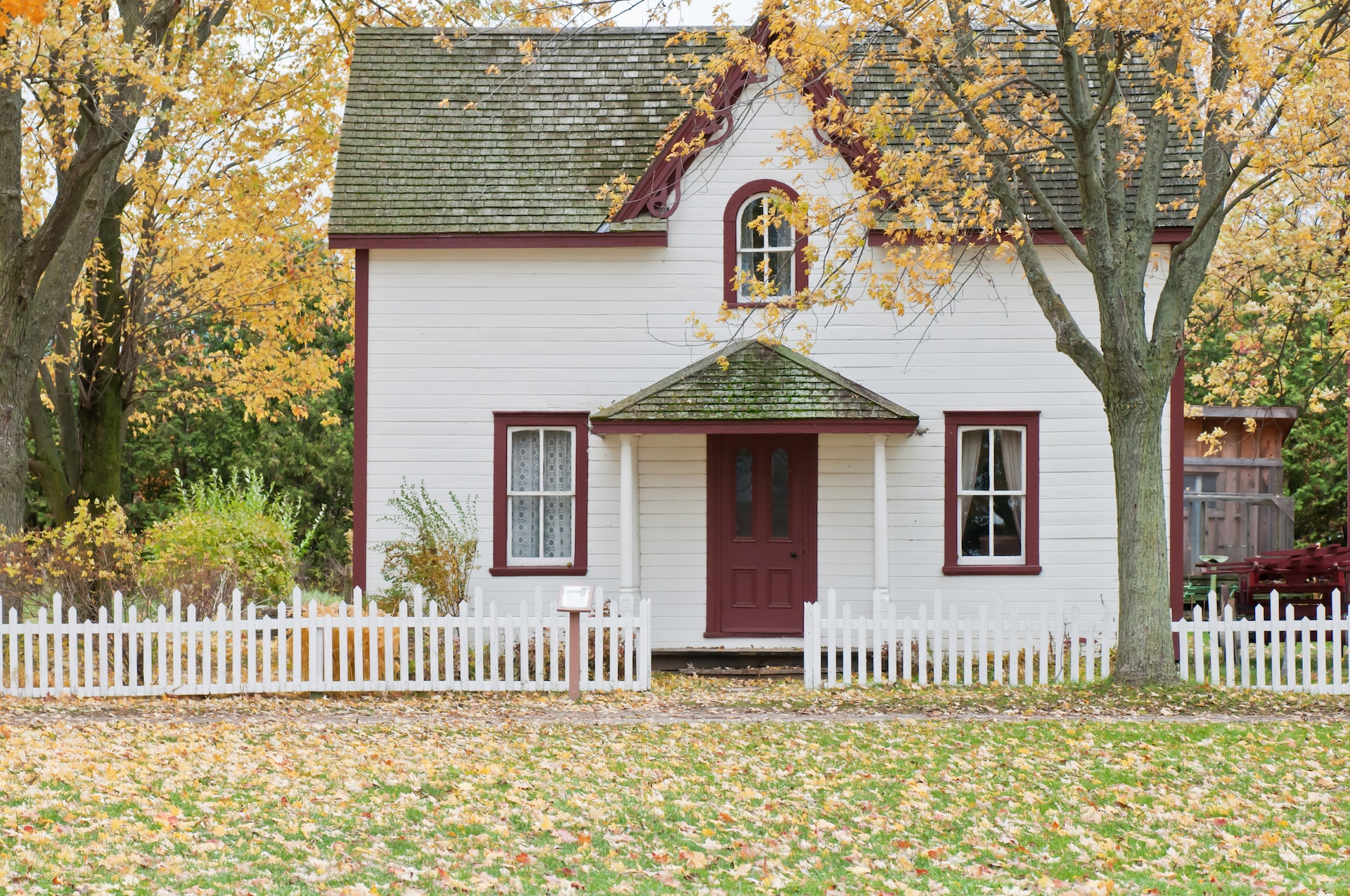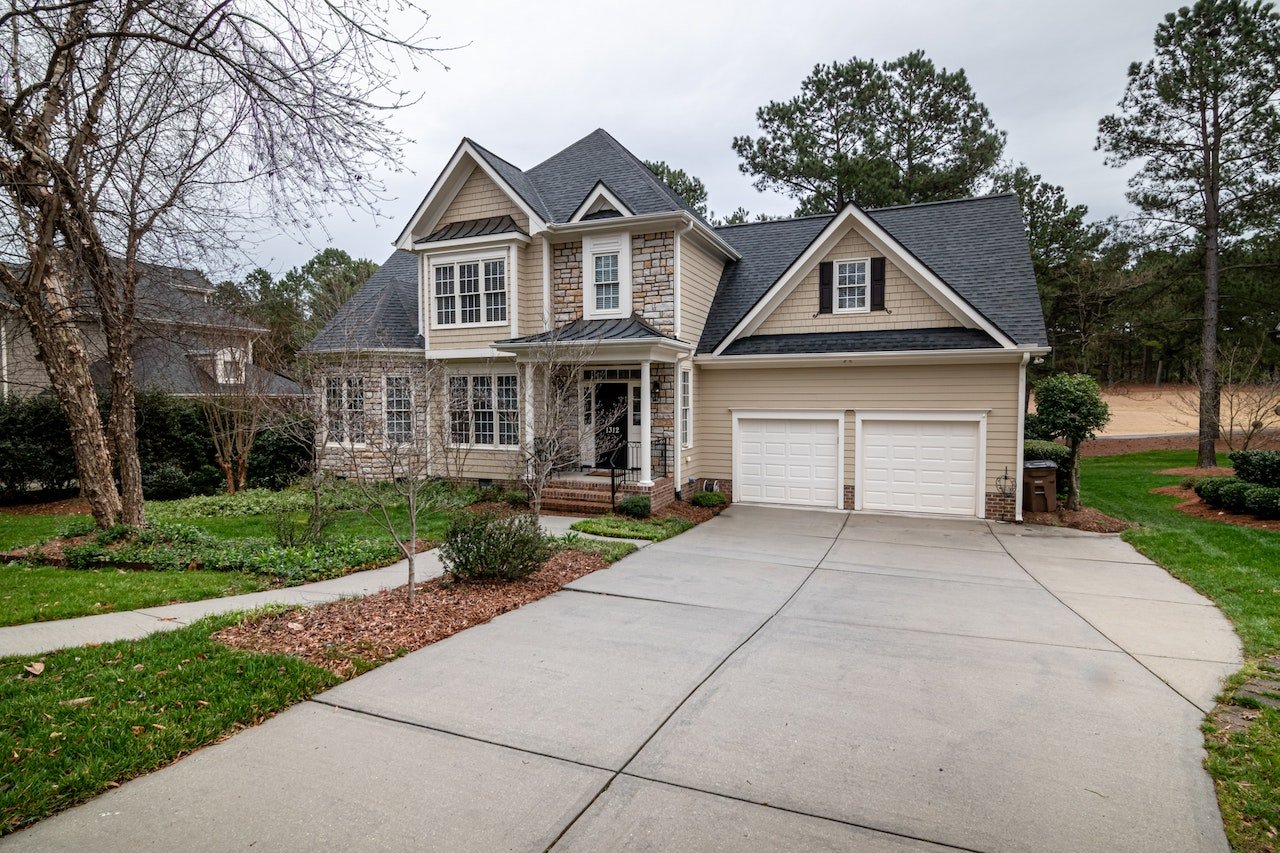Reverse Mortgage vs. Refinance: When & Why Each Makes Sense
Are you a homeowner looking to tap into the equity of your home? If so, you may have come across the terms "reverse mortgage" and "refinance."
While both options allow you to access the value of your home, they function in very different ways. In this blog post, we will explore the key differences between reverse mortgage and mortgage refinancing, so you can make an informed decision that suits your financial goals and needs.

Table of Contents
- Is a Reverse Mortgage the Same as a Refinance?
- What Are the Eligibility Requirements for a Reverse Mortgage?
- When a Reverse Mortgage Makes Sense
- When a Reverse Mortgage Doesn’t Make Sense
- Should You Refinance a Reverse Mortgage?
- What is the Downside to a Reverse Mortgage?
- How to Do a Reverse Mortgage Without the Downsides
- How EverythingHomeOwner.com Can Help You with Refinancing
Is a Reverse Mortgage the Same as a Refinance?
A reverse mortgage and a traditional mortgage, also known as a forward mortgage, are both types of home loans. However, they have distinct features that set them apart.
What is a Reverse Mortgage
Let's start with why a reverse mortgage is called "reverse." Unlike a traditional mortgage where you make monthly payments to the lender, a reverse mortgage allows homeowners who are at least 62 years old to convert a portion of their home equity into loan proceeds without making monthly mortgage payments. Instead, the lender makes payments to the homeowner, hence the term "reverse."
Similarities Between a Reverse Mortgage and Refinance
1. Use of Home Equity: Both a reverse mortgage and a refinance allow homeowners to tap into their home equity. With a refinance, homeowners can access their equity by replacing their existing mortgage with a new one, often at a lower interest rate or with different loan terms. With a reverse mortgage, homeowners can use the accumulated equity in their homes to receive loan proceeds.

2. Lender Involvement: Both types of mortgages involve working with a lender. Homeowners need to apply, go through an underwriting process, and meet certain eligibility requirements to qualify for either a reverse mortgage or a refinance.
Differences Between a Reverse Mortgage and Refinance
1. Repayment: One of the key differences between a reverse mortgage and a refinance is how repayment works. With a refinance, homeowners are responsible for making monthly mortgage payments to pay off the loan balance over time. However, with a reverse mortgage, repayment is typically deferred until the homeowner no longer occupies the property as their primary residence, sells the home, or passes away. At that point, the loan becomes due and must be repaid.
2. Income and Credit Requirements: When refinancing a mortgage, lenders typically consider the homeowner's income, credit score, and debt-to-income ratio. In contrast, a reverse mortgage does not have specific income or credit requirements. Instead, eligibility for a reverse mortgage is primarily based on the homeowner's age, the value of the home, and the amount of equity available.
3. Loan Disbursement: With a refinance, homeowners receive a lump sum of money or choose to receive cash in the form of a home equity line of credit (HELOC) or monthly payments. In contrast, a reverse mortgage offers different disbursement options, including a lump sum, a line of credit, fixed monthly payments, or a combination of these.
Related Reading
• How To Refinance An Inherited Property To Buy Out Heirs
• Mortgage Refinance Questions
• Bad Credit Home Loan Refinance
What Are the Eligibility Requirements for a Reverse Mortgage?
Reverse mortgages are a financial option available to homeowners who are age 62 or older and want to tap into the equity in their homes. Unlike traditional mortgages where homeowners make monthly payments, reverse mortgages allow homeowners to receive payments from the lender. If you're considering a reverse mortgage, it's important to understand the requirements involved.
Loan Applicant Must be 62 Years Old
The first requirement for a reverse mortgage is that you must be age 62 or older. This is a non-negotiable requirement as it is the basis for the entire program.
Homeowner Must Have Considerable Equity in the Home
You must either own the property outright or have considerable equity in it. This means that you cannot have any outstanding mortgage on the property or that the mortgage balance is significantly lower than the value of the home.
You Must Live in the Home, as Principal Residence
This means that the home must be your primary place of residence and cannot be a vacation home or investment property.

Homeowners cannot be Delinquent on Any Debts or Taxes
You must not be delinquent on any federal debt, such as taxes or student loans. This requirement ensures that you have a good financial standing and are responsible with your financial obligations.
Must-Have Financial Resources to Pay Taxes, Insurance, HOA Fees & House Up-Keep Costs
This requirement ensures that you are able to maintain the property and fulfill your financial obligations related to homeownership. It is important to have a clear understanding of your financial situation and ensure that you have the necessary resources to cover these expenses.
Must Attend a Consumer Info Session Given by a HUD-approved Counselor
This session provides valuable information about the program, its benefits, and potential risks. It is designed to ensure that homeowners fully understand the terms and implications of a reverse mortgage before making a decision.
A Reverse Mortgage Cannot be Refinanced within the Previous 18 Months
This is to prevent homeowners from repeatedly refinancing their reverse mortgage and potentially putting themselves in a financially vulnerable position. It is important to carefully consider the terms and implications of a reverse mortgage before proceeding.
Property Must Be Insured and Free of Health/Safety Hazards
This requirement ensures that the property is in good condition and suitable for habitation. It is important for homeowners to maintain their property and address any health or safety concerns before applying for a reverse mortgage.
When a Reverse Mortgage Makes Sense
Supplement Retirement Income
A reverse mortgage can be a great option for seniors looking to supplement their retirement income. By tapping into the equity of their home, they can receive a steady stream of cash flow without having to sell their property.
For example, let's say a retiree has a paid-off home worth $500,000. With a reverse mortgage, they could receive monthly payments to cover living expenses, allowing them to maintain their lifestyle without depleting their savings.
Pay Off Existing Mortgage
If you still have an existing mortgage on your home, a reverse mortgage can be used to pay it off. This can free up a significant amount of cash flow by eliminating your monthly mortgage payments.
For instance, if you have a $200,000 mortgage balance and take out a reverse mortgage for the same amount, you would no longer have to make mortgage payments, giving you more financial flexibility.
Access Home Equity for Various Expenses
A reverse mortgage provides homeowners with the ability to access the equity in their home for any purpose they choose. This can be particularly useful for covering medical expenses, home renovations, or other large expenses.
For instance, let's say you need to cover $50,000 in medical bills. By taking out a reverse mortgage, you can access the funds you need without having to deplete your savings or take on high-interest debt.
Delay Social Security Benefits
Opting for a reverse mortgage can allow retirees to delay claiming their Social Security benefits. This can be advantageous because the longer you delay, the higher your benefit amount will be.
For example, if you can comfortably live off the funds from a reverse mortgage for a few years, you can delay claiming Social Security, potentially increasing your monthly benefit by up to 8% for every year you delay.
Preserve Savings and Retirement
Using a reverse mortgage as a means of financing can help preserve your savings and investments. Instead of tapping into your retirement accounts or selling off assets, you can leverage the equity in your home. By doing so, you can maintain your current lifestyle and have peace of mind knowing that your savings and investments are intact for future needs or emergencies.
When a Reverse Mortgage Doesn’t Make Sense
High Fees and Closing Costs
Reverse mortgages often come with high fees and closing costs, which can eat into the equity of your home.
For example, you may have to pay origination fees, mortgage insurance premiums, and appraisal fees, among others. These costs can add up quickly and may not be worth it if you don't plan on staying in your home for a long time.
Decreased Inheritance for Heirs
When you take out a reverse mortgage, the loan amount plus accumulated interest will need to be repaid when the last borrower permanently leaves the home. This means that there may be less equity left for your heirs when you pass away.
For instance, if you take out a reverse mortgage for $200,000 and accumulate $50,000 in interest over the years, your heirs would only receive the remaining equity, if any, after the loan is repaid.
Risk of Foreclosure
If you fail to meet certain obligations, such as paying property taxes or maintaining the home, a reverse mortgage can put you at risk of foreclosure. This can be a significant concern, especially if you're no longer able to afford the expenses associated with homeownership.
For example, if you're unable to pay property taxes, the lender may initiate foreclosure proceedings.
Limited Options for Moving
Once you've taken out a reverse mortgage, it can limit your options for moving or downsizing. If you decide to sell your home or move into a different property, you'll need to repay the loan in full. This can be a challenge if you don't have sufficient funds from the sale of your home or other sources. It's important to consider your long-term plans and how they align with a reverse mortgage before committing to one.
Impact on Government Benefits
If you rely on means-tested government benefits, such as Medicaid or Supplemental Security Income, a reverse mortgage can affect your eligibility. The funds received from a reverse mortgage may be considered as income or assets, potentially disqualifying you from certain programs. It's crucial to understand the impact on your benefits before choosing a reverse mortgage as a means of financing.
Before deciding whether to use a reverse mortgage as a means of financing, it's important to consider your individual circumstances and consult with a financial advisor. While a reverse mortgage can provide significant benefits, it's crucial to weigh the potential drawbacks and assess how it aligns with your long-term financial goals.
Should You Refinance a Reverse Mortgage?
There are several reasons why a homeowner should consider refinancing their reverse mortgage. One compelling reason is that the HECM limits have increased over the years.
FHA HECM Loan Limit Was Increased
The reverse mortgage limit for HECM loans is $970,800 for 2022, a significant jump from the limit of just $625,500 a decade ago. This increase in the limit means that if you currently have a reverse mortgage and the limits have gone up, refinancing could allow you to access more equity in your home.
Tap Into Increased Home Value
By refinancing your reverse mortgage, you can tap into the increased home value and potentially receive a larger loan amount. This can be particularly beneficial if you need additional funds for expenses such as home improvements, medical bills, or other financial goals.

Take Advantage of Potential Changes in Interest Rate
If the current interest rates are lower than what you initially obtained with your reverse mortgage, refinancing can help you secure a lower interest rate, which can result in significant savings over time. This can lead to reduced monthly payments or even a shorter loan term.
Switching from an ARM to a Fixed Interest Rate
An ARM loan can have fluctuating interest rates, making it challenging to plan and budget for your future. By refinancing to a fixed-rate mortgage, you can have peace of mind knowing that your interest rate and monthly payments will remain consistent throughout the loan term.
Changing Repayment Terms
With a reverse mortgage, you are not required to make monthly mortgage payments. However, if you wish to repay the loan or if you want to leave your home as an inheritance for your loved ones, refinancing can provide you with the option to switch to a traditional mortgage with regular monthly payments.
Related Reading
• Refinancing Jumbo Mortgage
• Cash Out Vs No Cash Out Refinance
• Title Insurance For Refinance
What is the Downside to a Reverse Mortgage?
While a reverse mortgage can provide financial relief to seniors, it is important to consider the potential downsides before diving into this financial arrangement. Here are the top three downsides to using a reverse mortgage, along with practical real-life scenarios to illustrate their impact.
High fees and closing costs
These expenses can include origination fees, mortgage insurance premiums, appraisal fees, and counseling fees. These costs can quickly add up and eat into the equity of your home.
For example, let's say you're a retiree who decides to use a reverse mortgage to supplement your income. After applying for the loan, you realize that the closing costs are significantly higher than what you anticipated. This unexpected expense can put a strain on your finances and potentially limit your ability to cover other essential expenses.
Potential loss of the home
Reverse mortgages require homeowners to maintain the property, pay property taxes, and keep up with homeowners insurance. Failure to meet these obligations can result in foreclosure, leaving you without a place to live. Consider a scenario where you're a retiree who has taken out a reverse mortgage and struggles to cover the property taxes. Due to financial constraints, you fall behind on the payments, leading to foreclosure. This unfortunate situation could disrupt your living arrangements and force you to find alternative housing options.
How to Do a Reverse Mortgage Without the Downsides
Imagine you are a retiree who wants to supplement your monthly income but does not want to lose ownership of your home or pay high-interest rates and fees associated with a reverse mortgage. In this scenario, you could consider a mortgage refinancing strategy known as a "cash-out refinance."
With a cash-out refinance, you can refinance your existing mortgage for a larger loan amount and receive the difference in cash. This allows you to access your home equity without losing ownership or incurring the high costs associated with a reverse mortgage.
For example, let's say you have paid off a significant portion of your mortgage and have $100,000 in equity. You could refinance your mortgage for a larger loan amount, say $200,000, and receive $100,000 in cash. This cash can be used to supplement your monthly income or for any other financial needs you may have.
By choosing mortgage refinancing over a reverse mortgage, you can retain ownership of your home, access your equity, and potentially benefit from lower interest rates and fees. This strategy provides more flexibility and control over your finances compared to a reverse mortgage.
Related Reading
• Can I Add My Spouse To My Mortgage Without Refinancing
• Refinance Reverse Mortgage
• Hard Money Refinance
• Can You Refinance With A Lien On Your Home
How EverythingHomeOwner.com Can Help You with Refinancing
EverythingHomeOwner.com streamlines the refinancing process by matching homeowners with the most suitable brokers based on their specific needs and preferences. This eliminates the arduous task of researching and vetting multiple brokers, saving homeowners time and effort.